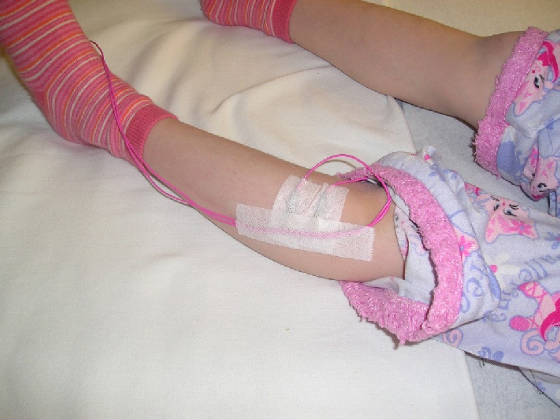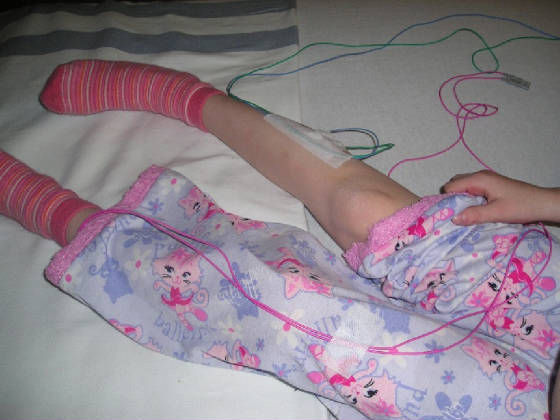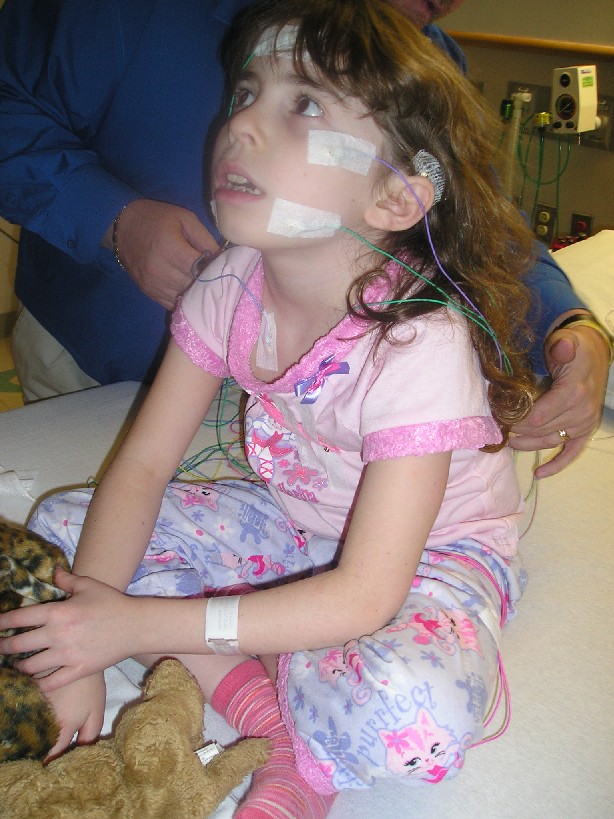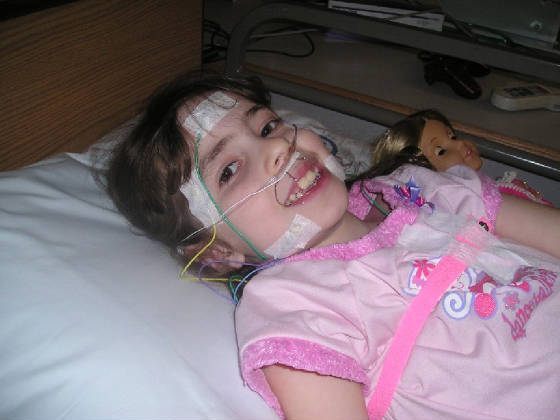|
The electrodes on Julie's head are for an EEG which will measure the sleep phases, from light sleep (phase 1) to deep
sleep (phase 4) also known as REM sleep. Interruptions in her sleep phases can account for daytime fatigue. If
Julie were having seizures, the EEG would be able to measure them. Thankfully, this is not an issue for Julie.
The EKG wires on her chest measure her heart beat and its rhythm and would find any cardiac issues present during her
sleep. She had an EKG and echocardiogram when she was 4 and both were normal, so we are not expecting any issues here.
The next set of wires are on her legs and will record any excess movement of legs that might interrupt her sleep, such
as with restless leg syndrome. Next, there are bands around her chest and tummy to record the exapansion that goes along
with breathing and will help to discover whether she is having any apnea, or cessation of breathing, at any point during the
night.

|
| Wires on her left leg.... |

|
| And wires on the right. The wires are taped to her pj's to keep them from coming off in the night. |

|
| Getting the band around her chest--again, it doesn't hurt at all! |

|
| Finally, a nasal canula measures end tidal CO2 and wires under measure airflow from mouth breathing. |
The nasal canula to measure exhaled CO2 is an essential element to a sleep study for any child with a neuromuscular disorder.
You may as well not bother with the study if you are not going to measure end-tidal CO2! The reason is that kids and
adults with neuromuscular disorders are at risk for "hypopnea" which means breathing shallowly. With hypopnea, the shallow
breathing can mean that not enough CO2 (carbon dioxide) gets expelled with each breath and it will show up on end-tidal CO2
readings as concentrations of CO2 that are too high.
The wire along with the nasal canula measures airflow from Julie's mouth if she is mouth breathing rather than nose breathing
at night. I guess this would be especially relevant for obstructive apnea because you need to measure whether she is
breathing either from her nose or mouth.
Continued on page 3....
|

